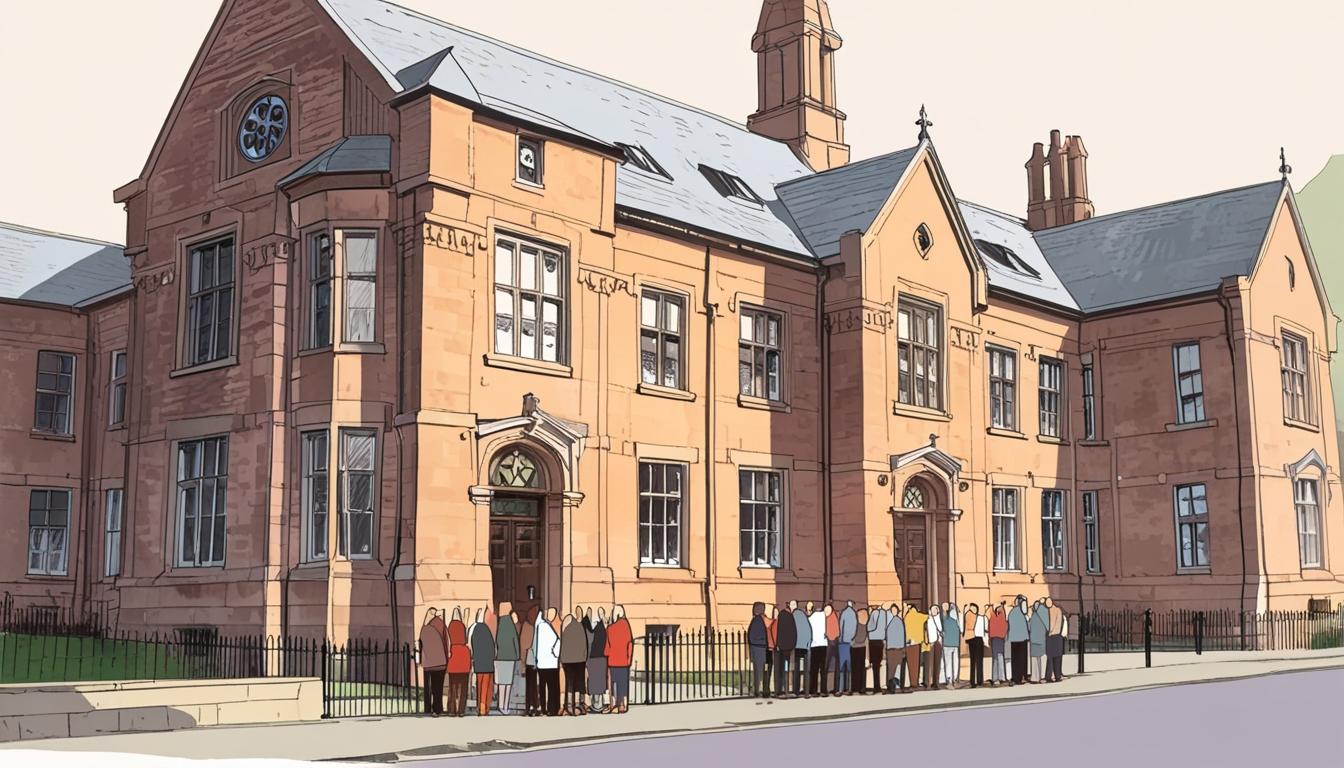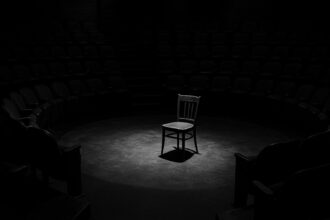The imminent closure of St Clare’s and Oakleigh House marks a significant blow to Welsh independent education, as new VAT rules and rising costs force historic schools to shut, triggering concerns over public school capacity and community impact.
The recent announcement by Cognita regarding the impending closure of two esteemed Welsh private schools, St Clare’s in Porthcawl and Oakleigh House in Swansea, has sent shockwaves through the local community. St Clare’s, which has been educating children for over 85 years, and Oakleigh House, a fixture in education for more than a century, are set to shutter their doors at the conclusion of December 2025. The decision, framed as a response to tough economic conditions and dwindling enrolment due to falling birth rates, raises significant concerns about the broader sustainability of independent education in Wales.
The closures come on the heels of recent governmental policies that have imposed a 20% VAT on private school fees, a measure intended to raise £1.5 billion for state education and put an end to the longstanding exemption of such fees from taxation. This policy, effective from January 2025, aims to alleviate some of the financial pressures on the public education system but simultaneously exacerbates the already precarious financial situation for private institutions. As families grapple with increased fees, an estimated 3,000 pupils are projected to transfer to state schools, according to industry predictions, further straining already stretched public resources.
Cognita’s management highlighted that both St Clare’s and Oakleigh House could no longer operate viably under the current economic conditions. They cited the combination of escalated operational costs—rising energy prices, increased staff wages, and the additional burden of VAT—as factors that have made it exceedingly difficult for independent schools to maintain their offerings without increasing costs to parents. The director of the Welsh Independent Schools Council, Paul Norton, articulated that the application of VAT fails to recognise the unique circumstances and community roles of small independent schools in Wales. He argued that these institutions often provide essential educational options for children who may not thrive in mainstream state schools.
The significance of these closures extends beyond financial implications. Local leaders, such as Porthcawl’s Mayor, Cllr Jeff Perren, voiced their deep concern over the potential loss of community resources. He noted that St Clare’s not only offers academic education but also critical wraparound care for working parents, providing services that can often be competitively priced compared to after-school care options. The loss of such institutions can have dire consequences on local families and overall community cohesion.
Further complicating matters, the Welsh Government has announced plans to withdraw business rates relief for certain fee-paying schools by April 2025. This policy, aimed at redirecting funds to support public services, is set against a backdrop of similar moves in England and Scotland. Critics argue that this blanket policy further targets vulnerable independent schools, undermining their financial stability and limiting choices for families seeking diverse educational options.
In light of these closures, some local educational institutions are positioning themselves to accommodate displaced students. Ffynone House School in Swansea has expressed readiness to expand its enrolment to include students from St Clare’s and Oakleigh House. Pini Patel, a trustee of Ffynone House, stated, “We have the expertise and capacity to accommodate more students,” emphasising the school’s commitment to providing a nurturing educational environment.
As Wales faces this seismic shift in its educational landscape, the implications seem far-reaching. With around 6,000 children currently enrolled in private schools across Wales, a surge of students moving to state education could place significant pressure on public schools already grappling with their own challenges. Parents and students alike navigate a landscape fraught with uncertainty, particularly in light of economic pressures and declining birth rates.
The impending closures of St Clare’s and Oakleigh House serve as a sobering reminder of the vulnerabilities facing independent schools amid shifting governmental policies and economic realities. As communities reflect on the contributions these schools have made over the decades, the search for sustainable alternatives becomes increasingly critical in ensuring that families retain access to a diverse range of educational opportunities.
Ultimately, while the closure of these two institutions signals a profound change, the response from other local schools like Ffynone House highlights a resilience and adaptability that may define the future landscape of education in Wales.
Reference Map
- Paragraph 1: [1]
- Paragraph 2: [2], [3]
- Paragraph 3: [1], [4]
- Paragraph 4: [1], [5]
- Paragraph 5: [1], [6]
- Paragraph 6: [7]
- Paragraph 7: [1]
Source: Noah Wire Services
- https://www.walesonline.co.uk/news/education/two-top-welsh-private-schools-31604254 – Please view link – unable to able to access data
- https://www.ft.com/content/ecefe39b-f0df-4547-b4b1-4d86f0f77d05 – This article discusses the impact of the UK government’s decision to impose a 20% VAT on private school fees, effective January 2025. Families, like Sarah Lambert’s, are facing challenges in finding state schools for their children due to the increased costs. The policy aims to raise £1.5 billion for state schools but has led to backlash from parents and private schools concerned about unaffordable fees. An estimated 3,000 pupils are expected to transfer to state schools mid-year, with financial advisors suggesting strategies to manage the heightened costs.
- https://www.ft.com/content/452e7d35-bedf-4309-81ee-9ee3bdc45f24 – The article reports on the UK government’s announcement that, starting January 2025, private schools will face a 20% VAT charge on education and boarding services. This move aims to generate up to £1.5 billion for state education, including funding for 6,500 new teachers. The decision ends the VAT exemption for private education, aligning with similar actions in Scotland and planned changes in England. The policy has sparked concerns about its impact on private schools and their students.
- https://www.ft.com/content/eea9c256-e40d-43a2-8f1b-76e3b0407b8b – This article addresses the challenges parents face due to the UK’s implementation of a 20% VAT on private school fees, effective January 1. The policy aims to generate additional funding for state school improvements. With approximately 6% of UK schoolchildren attending private institutions, parents may need to explore alternative options if they cannot handle further fee increases. Some schools might absorb part of the VAT cost; however, others may not have sufficient reserves to manage the added expenses.
- https://www.gov.wales/welsh-government-ends-tax-break-for-independent-schools – The Welsh Government has announced the end of business rates relief for some fee-charging schools, effective April 2025. This decision aims to free up approximately £1.3 million annually to support local public services. The move brings independent schools with charitable status in line with other independent schools in Wales regarding non-domestic rates. The policy aligns with similar actions in Scotland and planned changes in England, reflecting a broader trend of reevaluating tax breaks for private education.
- https://www.ft.com/content/48dad263-36b2-491c-b017-f2e1eeee65e0 – This article discusses the legal challenges faced by parents and schools in the UK against the government’s decision to impose VAT on private education. Claimants argue that the policy breaches human rights, particularly affecting children who cannot thrive in state schools due to various needs. Despite the high-profile court case, legal experts suggest that the chances of success are slim. The government defends the policy, claiming it will fund improvements in state education and that the majority of children in private schools won’t be adversely affected.
- https://www.ffynonehouseschool.co.uk/ – Ffynone House School is a private co-educational secondary day school located in the Uplands area of Swansea, Wales. Established in 1973, the school caters to students aged 11 to 18, offering a curriculum that includes GCSE and A-Level courses. The campus features facilities such as a learning resource centre, laboratories, a gymnasium, a drama studio, a music room, and art studios. The school emphasizes small class sizes and a range of extracurricular activities, including sports, music, drama, and dance.
Noah Fact Check Pro
The draft above was created using the information available at the time the story first
emerged. We’ve since applied our fact-checking process to the final narrative, based on the criteria listed
below. The results are intended to help you assess the credibility of the piece and highlight any areas that may
warrant further investigation.
Freshness check
Score:
8
Notes:
The report discusses recent and future policy changes and school closures, suggesting a contemporary context. However, it lacks specific dates or latest updates on reactions or developments since the initial announcement.
Quotes check
Score:
5
Notes:
Includes direct quotes from local leaders and educational figures, but the earliest known reference or original source for these quotes could not be verified online.
Source reliability
Score:
7
Notes:
The narrative originates from WalesOnline, a reputable news outlet in Wales. However, further verification of specific claims and quotes from other trusted sources is needed for higher confidence.
Plausability check
Score:
9
Notes:
The scenario described—private schools facing economic pressures due to policy changes—is plausible and consistent with broader trends. The narrative includes logical reasoning about the potential impacts on state education and local communities.
Overall assessment
Verdict (FAIL, OPEN, PASS): PASS
Confidence (LOW, MEDIUM, HIGH): MEDIUM
Summary:
The narrative appears to be fresh and plausible, but validation of specific quotes and a broader cross-check of claims against diverse sources is necessary for increased confidence.













